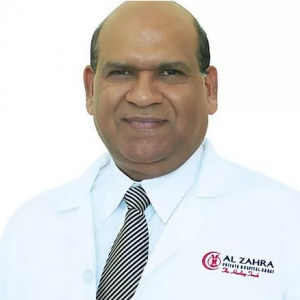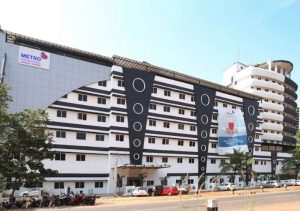Nephrectomy
Nephrectomy is simply “kidney removal” and can be performed for patients who need a neobladder reconstruction but have damaged kidneys. This procedure involves simple, partial, radical (similar to nephroureterectomy), and laparoscopic nephrectomy. The kidneys are two bean-shaped organs about the size of one’s first and located on the right and left side of the abdomen, […] Read More
Top Doctors For Nephrectomy Treatments
Top Hospitals For Nephrectomy Treatments
Nephrectomy
- To treat a cancerous kidney.
- To remove kidney benign tumors.
- To treat diseased or damaged kidneys caused by severe trauma from accidents, infections, and diseases such as blocked urinary tract, hypertension, renal artery stenosis, etc.
- To remove kidney stones or cysts.
- For patients who need a neobladder reconstruction, but have damaged kidneys.
- To conduct a kidney transplant.
- To remove a non-functioning, or rejected donor’s kidney.
- Partial Nephrectomy (Kidney-sparing)
- Simple Nephrectomy
- Radical (Complete) Nephrectomy
- Infection
- Hemorrhage or blood loss
- Allergic reactions to anesthesia or other medications used.
- Surrounding organs, nerves, and/or tissue injury.
- Puncture of the chest cavity.
- Pulmonary embolism; blood clots that form in your legs and move to your lungs which could cause a blockage of the track and lead to a stroke or heart attack.
- Hernia; lumpy bulge on the bowel that may arise from the scarring of the incision site.
- The decrease in kidney function if one kidney is left.
- Kidney diseases
- High blood pressure or hypertension.
- You will be laid on your side on an angular operating table with your upper and lower body bent sharply away at your waist, stretching your side to give easy access to the kidney.
- An angular incision of about 8 to 10 inches long will be made on the side, just below your ribs or over the last 2 ribs, extending from your spine from the side to the front of your abdomen.
- If considered necessary, the last one or two ribs may be removed to perform the surgery.
- Surrounding organs, tissues, fat, muscles will be moved aside carefully to prevent injury when the kidney is operated on.
- The ureter and blood vessels of the kidney will be tied up and cut off.
- The kidney is removed.
- The part of the ureter and blood vessels left in the body is stitched closed. Unless a healthy kidney is to be planted into the area immediately.
- The incision is stitched back up with sutures or closed with surgical staples.
- You will be laid on your back and an incision of about 8 to 12 inches will be made on your abdomen just below your ribs.
- The ureter and blood vessels of the kidney are tied off and cut, and the kidney is taken out with the surrounding fat, adrenal glands, and lymph nodes.
- The ureter and blood vessels left are stitched close.
- The incision is sutured back with stitches or surgical staples.
- Four incisions are made on your abdomen; 3 of these incisions are 1 inch each and the last one which is usually just below your navel will be about 4 to 5 inches.
- Through the incisions, a laparoscope with a small camera will be inserted to monitor the inside and guide the surgical instruments that are also inserted through the incisions. The surgeon monitors the movement of the laparoscope and instruments through a computer or magnifying telescope.
- With the guide of the laparoscope, the surgeon directs the surgical instrument to detach the ureter and blood vessels of the kidney from the body.
- After the kidney is detached, the kidney is lifted out through the large incision, by placing a soft sling under the kidney and drawing the edges out.
- The incisions are sutured back with stitches or staples.
FAQ
What is the difference between radical nephrectomy and nephroureterectomy?
Radical nephrectomy is the removal of the kidney along with the surrounding fat, adrenal gland, and lymph nodes. While nephroureterectomy is the removal of the entire ureter and kidney, along with the renal pelvis and bladder cuff. However, both are used to treat kidney diseases.
Which doctor should I consult for nephrectomy?
Consult a surgeon, mainly a urologist.
Why is the left kidney usually chosen?
The left kidney is often chosen for nephrectomy because it is easier to reach and has longer blood vessels. The liver obstructs the right kidney, making it difficult to reach and a high risk of puncturing the liver.
Can I live a normal life with one kidney?
Yes, you can. One healthy kidney can work just as well as two. You can live a normal life and have the same life span as any other person with two kidneys. But you have to be cautious about your lifestyle, habits, and diet because you are at risk of losing kidney function faster if there is just one kidney left with no other one to share the burden.
What should you not eat with one kidney?
Avoid or minimize the intake of any food with too much cholesterol in them and saturated trans-fat. They can raise your blood sugar and in the long-term damage your kidney. These include milk, sweets, starch, red meat, butter, palm oil, etc. Eat a lot of vegetables, fruits, and whole grains.








































































































